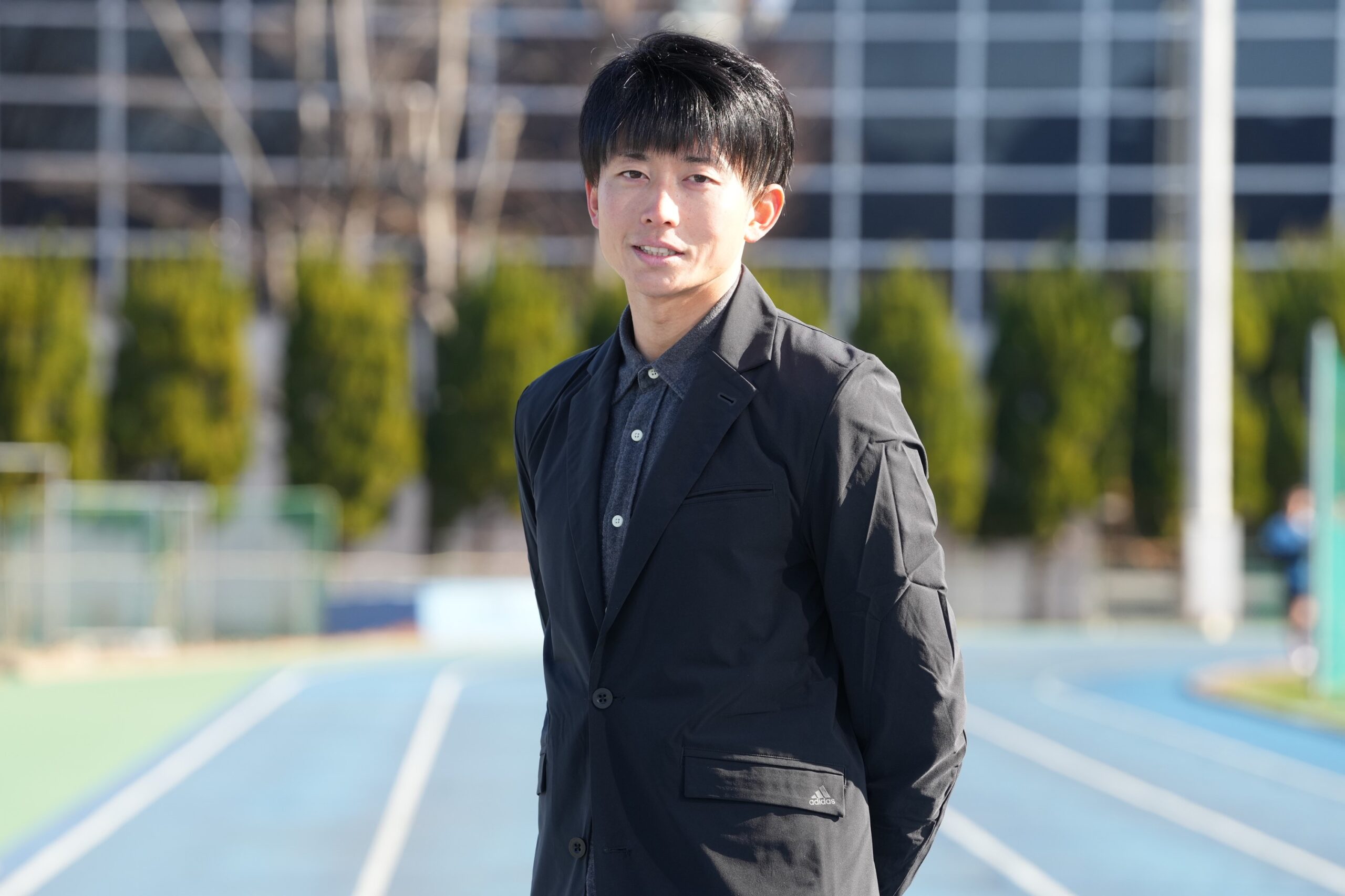
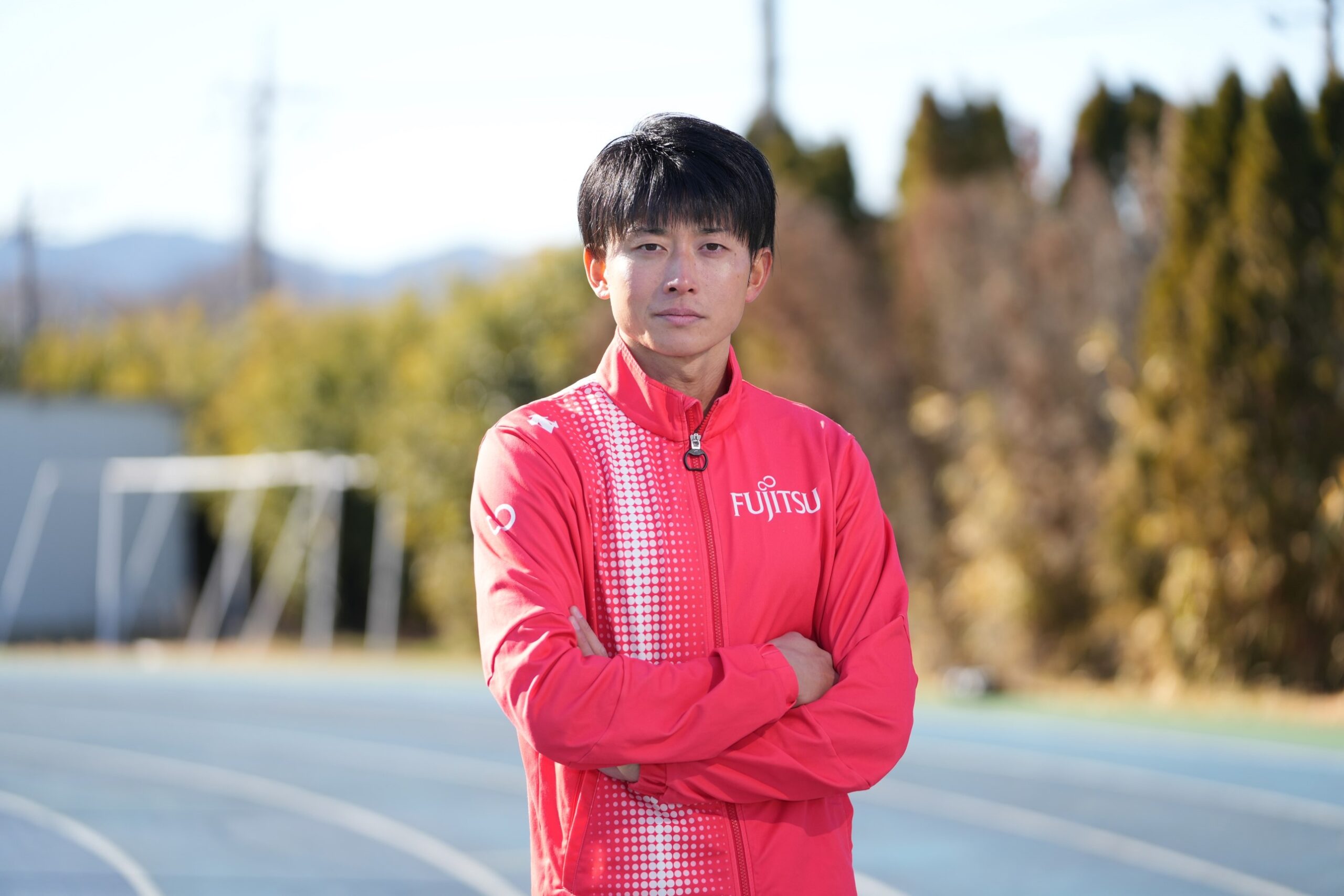
Kentaro Sato
Born in Saitama in 1994. Men’s 400m Japanese record holder (44.77 seconds).
He started running at Toyooka High School in Saitama Prefecture, and after graduating from Josai University, he joined Fujitsu.
He competed in the Olympic Games in Rio de Janeiro 2016 and Tokyo 2020. He has competed in four World Championships in Athletics since Beijing 2015, where he first competed at age 20.
In July 2023, he won a gold medal at the Asian Championships, recording 45.00 seconds, the second fastest time in Japan’s history. At the Budapest 2023 World Athletics Championships in August, he recorded 44.77 seconds, surpassing the Japanese record of 0.01 seconds, which had not been broken for 32 years.
He is an ace athlete in the Japanese short distance world and expected to compete at the Paris 2024 Olympic Games and the World Athletics Championships Tokyo 25.
At First, Discovering the Rigors of the 400m: “Didn’t Know There Was Such a Tough Event”
–How did you get started in athletics?
I started competing when I entered high school, first in the astronomy club. Later, I became a member of the track and field club as a dual club member, and here I am today. At first, I was mainly involved in the astronomy club, but I had played baseball until junior high school and wanted to be physically active, so a classmate from the track club asked me to join the club, saying, “We don’t have enough members and can’t run in the relays, so I want you to join us.”
–The 400m is the “longest short distance event”. How did you feel when you started?
My first exposure to 400m was the mile relay (4x400m relay). The high school track team was small, so all of the short distance athletes were required to run both the 4 x 100m relay and the mile relay. So I ran the 400m relay, and at first I was surprised that there was such a tough event (laughs). But we get used to it, so my fear of the 400m has lessened as I have done it more times. The 400m is a long distance and we can make corrections while we are running, so I began to enjoy it and continue to run it.
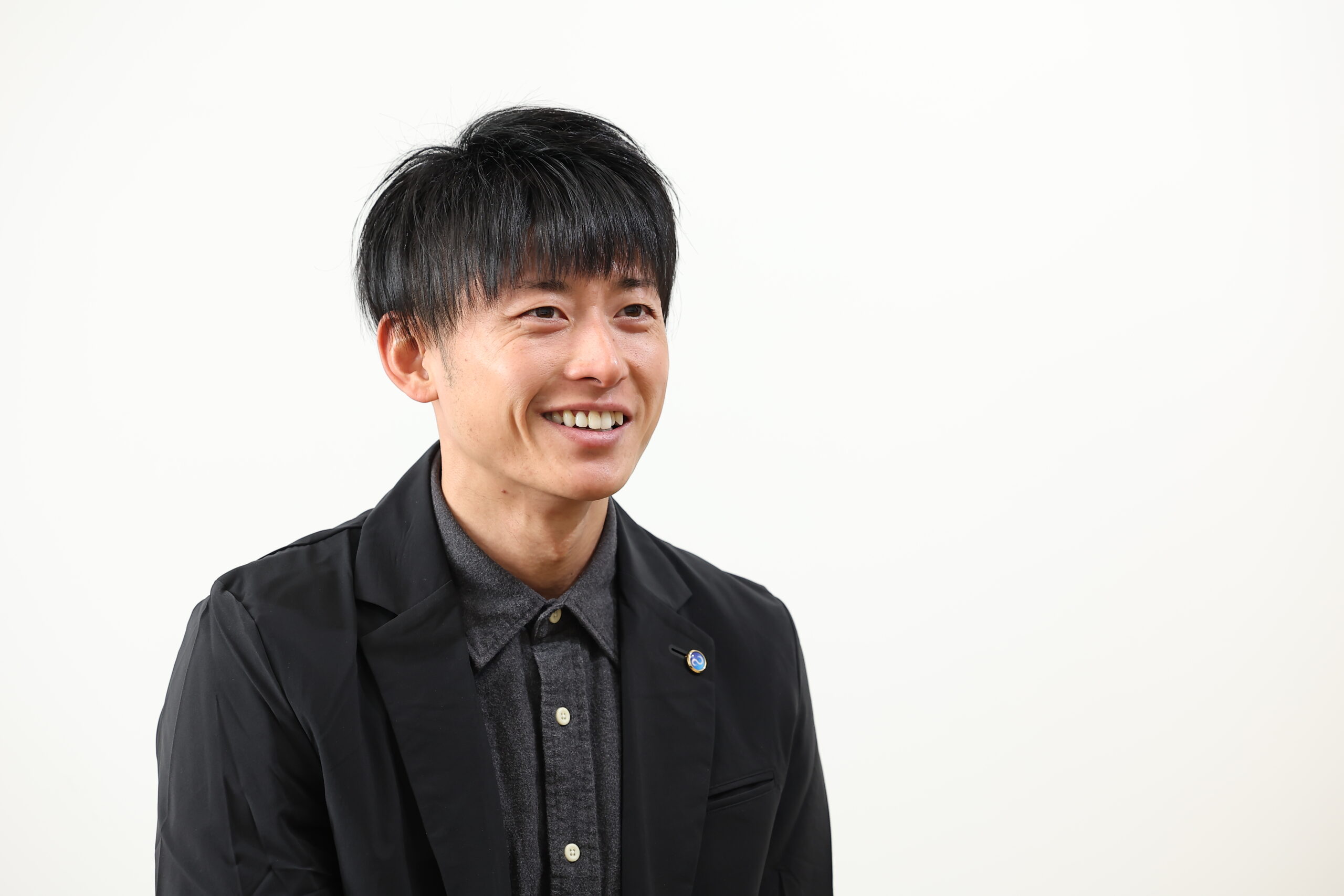
–What characteristics of yourself do you think make you suitable for 400m?
I have never felt that I am suited for it (laugh). In sprint events, to some extent, you have your own core, and if you apply it in a race, you will get a record. I think it is important to build that core firmly on your own. I was good at reproducing the shape of how I wanted to move like this, so that “ability to reproduce” is also at the core of my athletics.
Hybrid of Experience and Science to Break Japanese Records
–You were selected for the Rio de Janeiro 2016 Olympics but did not compete, and you did not make the finals of the Tokyo 2020 Olympics despite setting a Japan-tying record in the mile relay.
I watched Rio from the stands. I was happy to see my friends who had spent time together as the Mile Team express their performance on the big stage, but I did not feel satisfied or fulfilled within myself.
In Tokyo, I was the oldest member of the mile team, so I was in a position to lead the team, but we missed the finals, which was our biggest goal. People around me said to me, “You did a great job,” because it was a Japanese tie record, but I think there were things I could have done a little more. I don’t feel a sense of accomplishment in both competitions; I only feel that I could have done more.
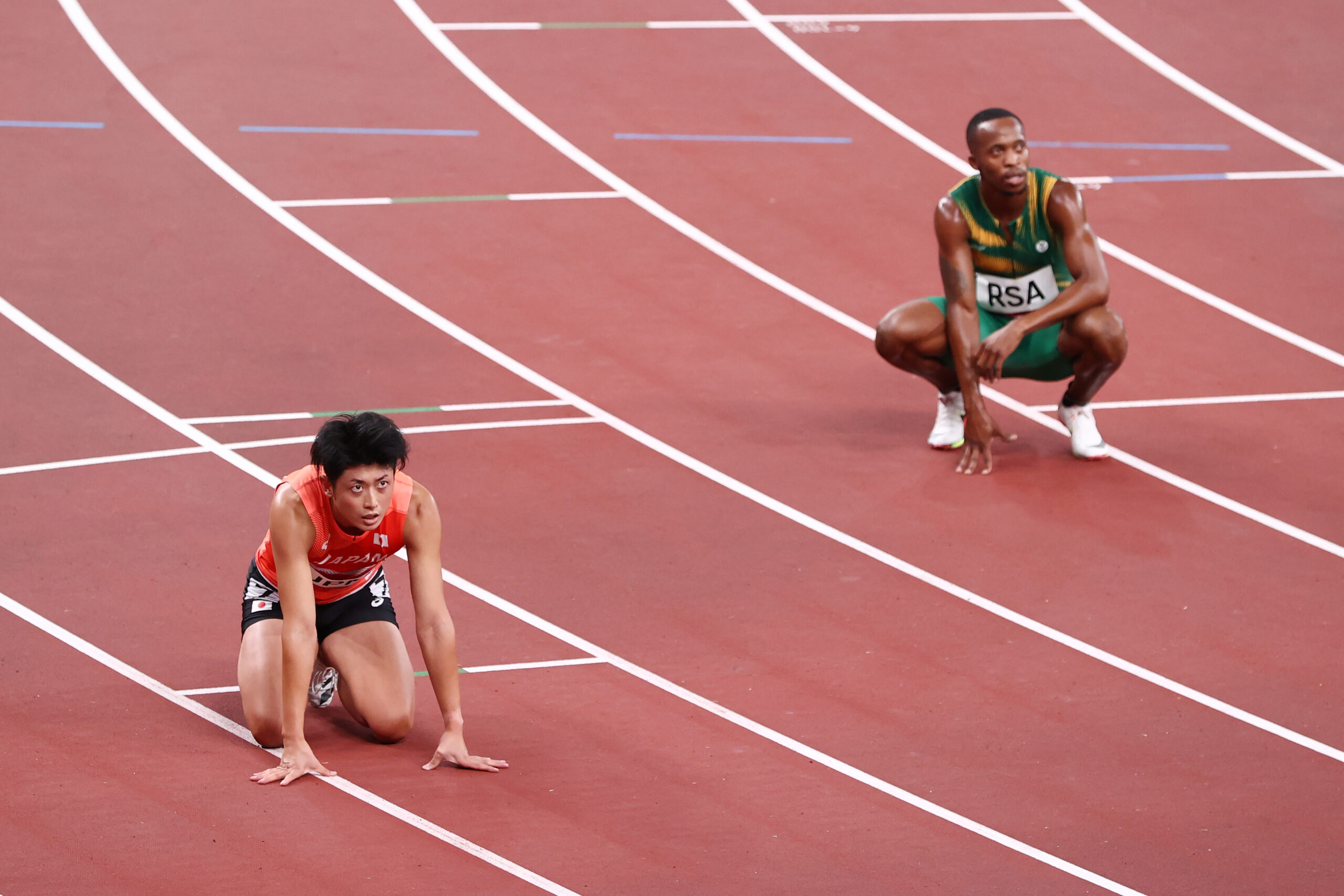
©Getty Images for World Athletics
–At the Asian Championships in July 2023, you set the Japanese record of 45.00 seconds, the second fastest time in Japan’s history (at that time), and at the Budapest 2023 World Championships in August, you set a new Japanese record for the first time in 32 years with a time of 44.77 seconds. What was the reason for your consecutive good records?
The year before last, I injured my Achilles tendon and was unable to compete, so I went to graduate school during that period. I learned a great deal about the 400m and athletics there through literature. At that time, I developed a core of running in the 400m.
I was able to “just reproduce” the 400m that I had constructed, and I was able to achieve a high average record. However, I think I am still at about 60% completion. My current challenge is to bring it closer to 100%.
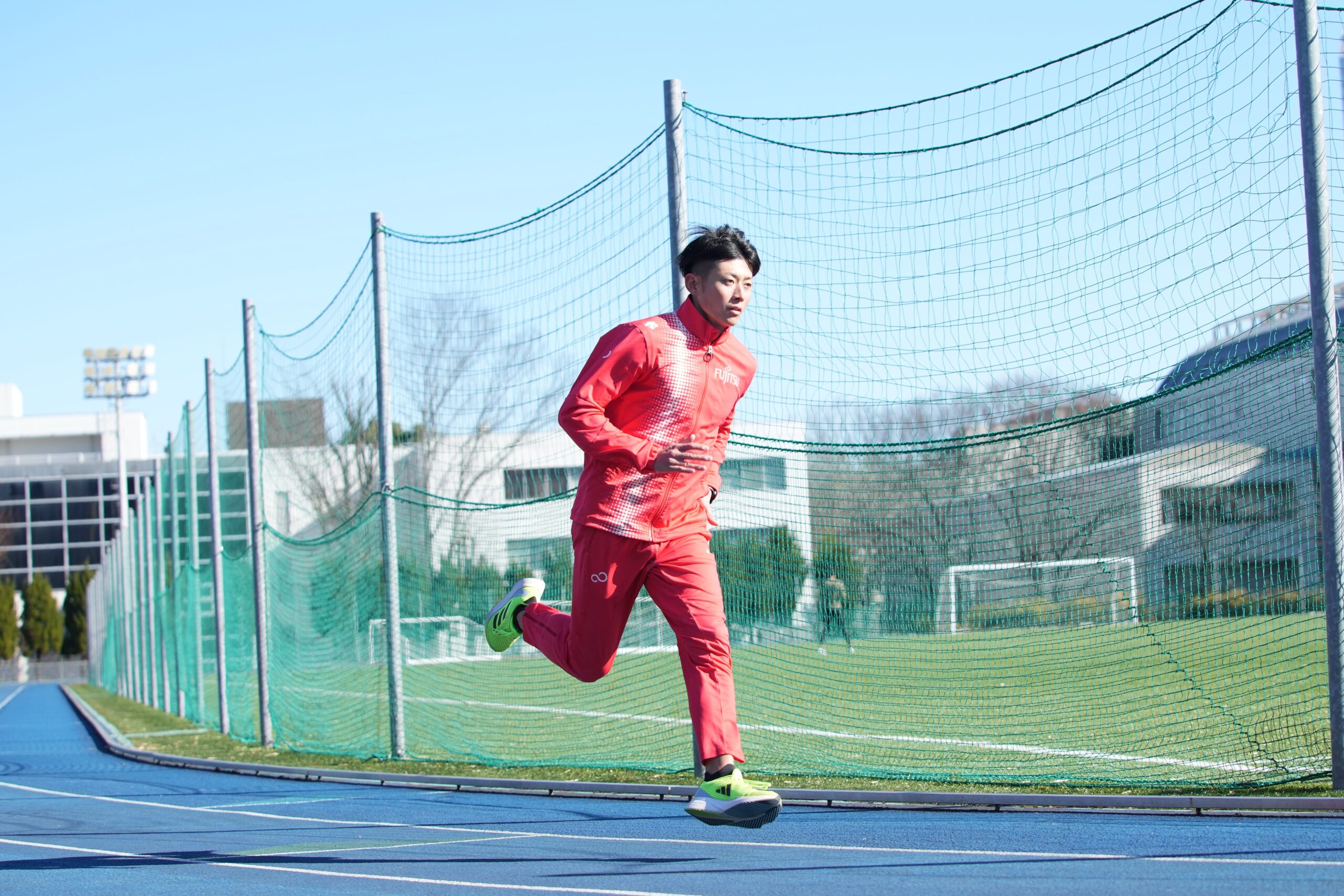
–I guess you learned the theory while you were on break, and then solidified it in practice last year.
That’s right. Until now, I had relied on my experience and could not explain my running. To some extent, I had an idea of how to run, but I had not been able to demonstrate it as scientific data, which led to poor reproducibility. However, as a result of hybridizing experience and science, I was able to achieve a personal best for the first time in eight years and break the Japanese record as well. However, even at the moment I set the record, I did not feel a sense of accomplishment or satisfaction, and since I could not make the finals at the World Championships in Athletics, I now have a strong feeling that I am “not there yet.”
The Eight Years of Struggle Were Not in Vain
–The Asian record is 43.93 seconds. What do you think you need to improve in order to beat that time?
Looking back on my 44.77 seconds race, I think I could have set the record only because of the atmosphere of the World Championships and that stadium. First of all, I want to be able to achieve this record on my own. Thinking about it, I think the best race last year was the final of the Asian Championships, where I ran 45.00 seconds.
If you divide the 400m into parts, it was in that race that I was able to express myself with my movements well thought out. I was slow in the first 200m at that time, so I had to increase my speed there, but not to slow down from 200m to 300m, and not to dangle my body in the last 100m. If I can reproduce that movement in the last 100m, there will definitely be little reduction in speed. I am training to be able to do that kind of movement.
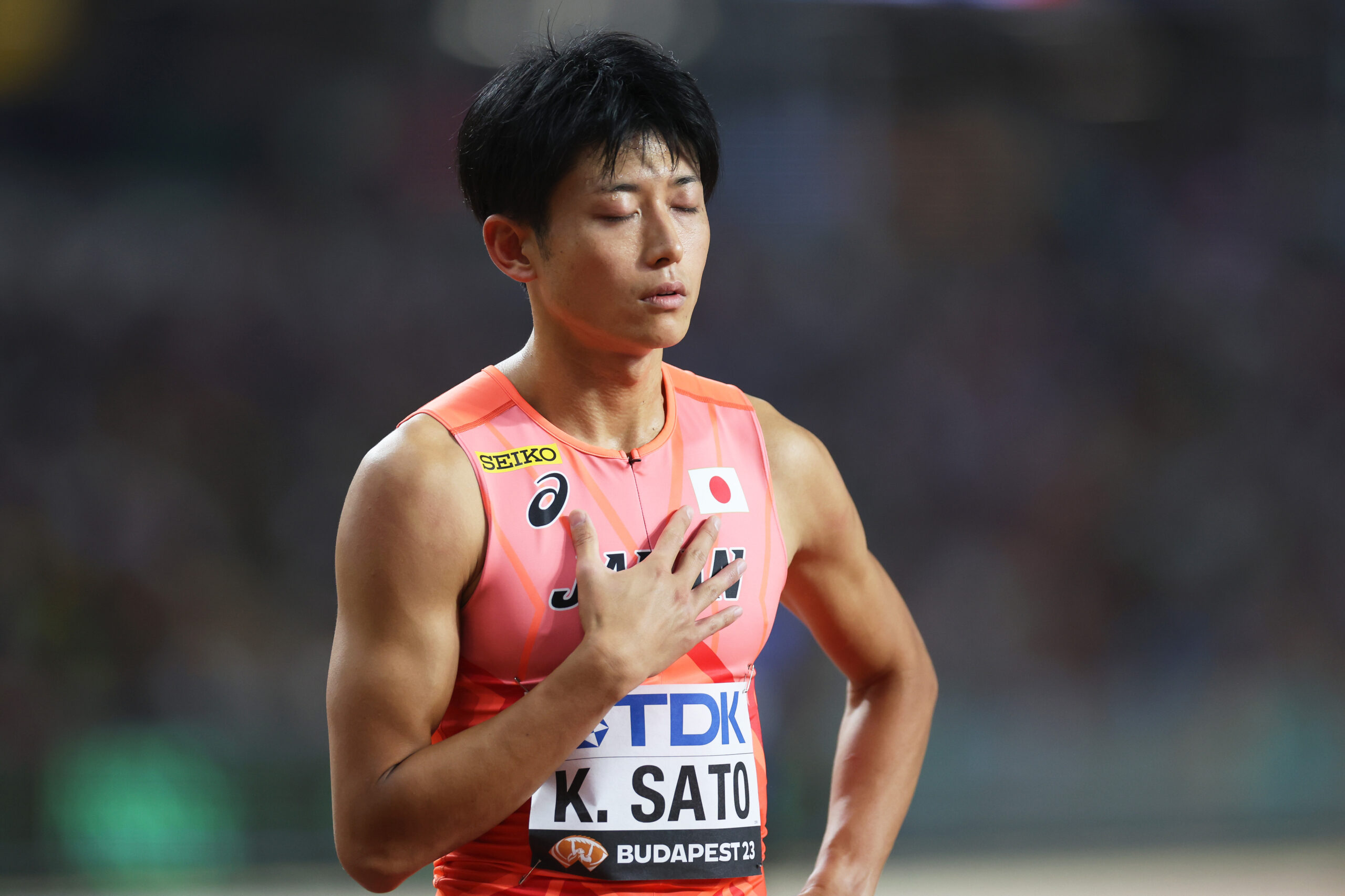
©Getty Images for World Athletics
–I think that facing the records can be painful. How do you face yourself on a daily basis?
It took me 8 years to break my personal best last year. I have always thought about how I could break the record, and although it was a painful eight years, I am glad that I was able to try many things during that time.
For example, I would increase my initial speed and run as fast as I could for the first 200 meters, I was able to experience how the last 200m would be run. Conversely, I could run the first 200m slowly and test how much I could run the latter 200m without losing time. I think it was eight years that I was able to draw more out of myself for the 400m.
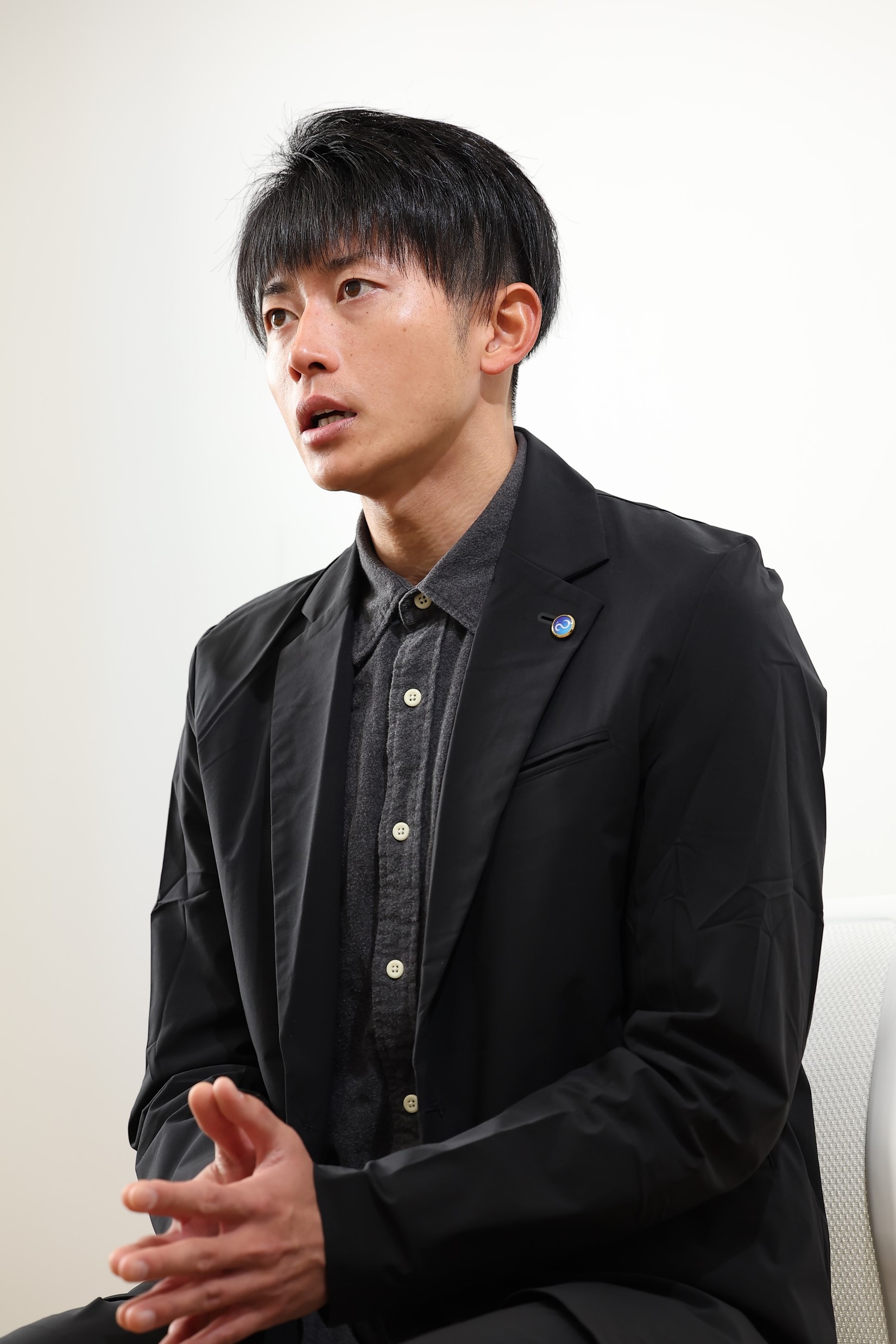
Dreaming of a Full House at the National Stadium
–The Paris 2024 Olympic Games will be held this year, and the World Athletics Championships Tokyo 25 will be held next year. What is your roadmap for the future?
My goals for this year’s Olympics are to make the finals in the individual events and win a medal in the mile relay. If I can achieve these goals, I think I will be in a position to aim for a medal in the individual event and a gold medal in the mile relay at the World Championships.
–What do you feel is the significance of the World Championships in Athletics being held in Tokyo?
Personally, I believe that this event will be a turning point for the future of Japanese track and field. It is such an important event that it will determine the future of track and field for everyone watching and for the junior generation who will be introduced to track and field through this event. It is difficult to determine what constitutes success, but I will do my best to make sure that everyone who watches this World Championships in Athletics will say that it was a good event.
–What are you looking forward to or hoping for at the World Athletics Championships Tokyo 25?
I am of course looking forward to seeing how well I can express my performance, and I would be happy if more people are interested in watching track and field events because of this event. I would love to see the National Stadium filled to capacity. I am sure the Japan Association of Athletics Federations and the Tokyo Metropolitan Government are thinking of measures and initiatives to achieve this, and I hope I can help.
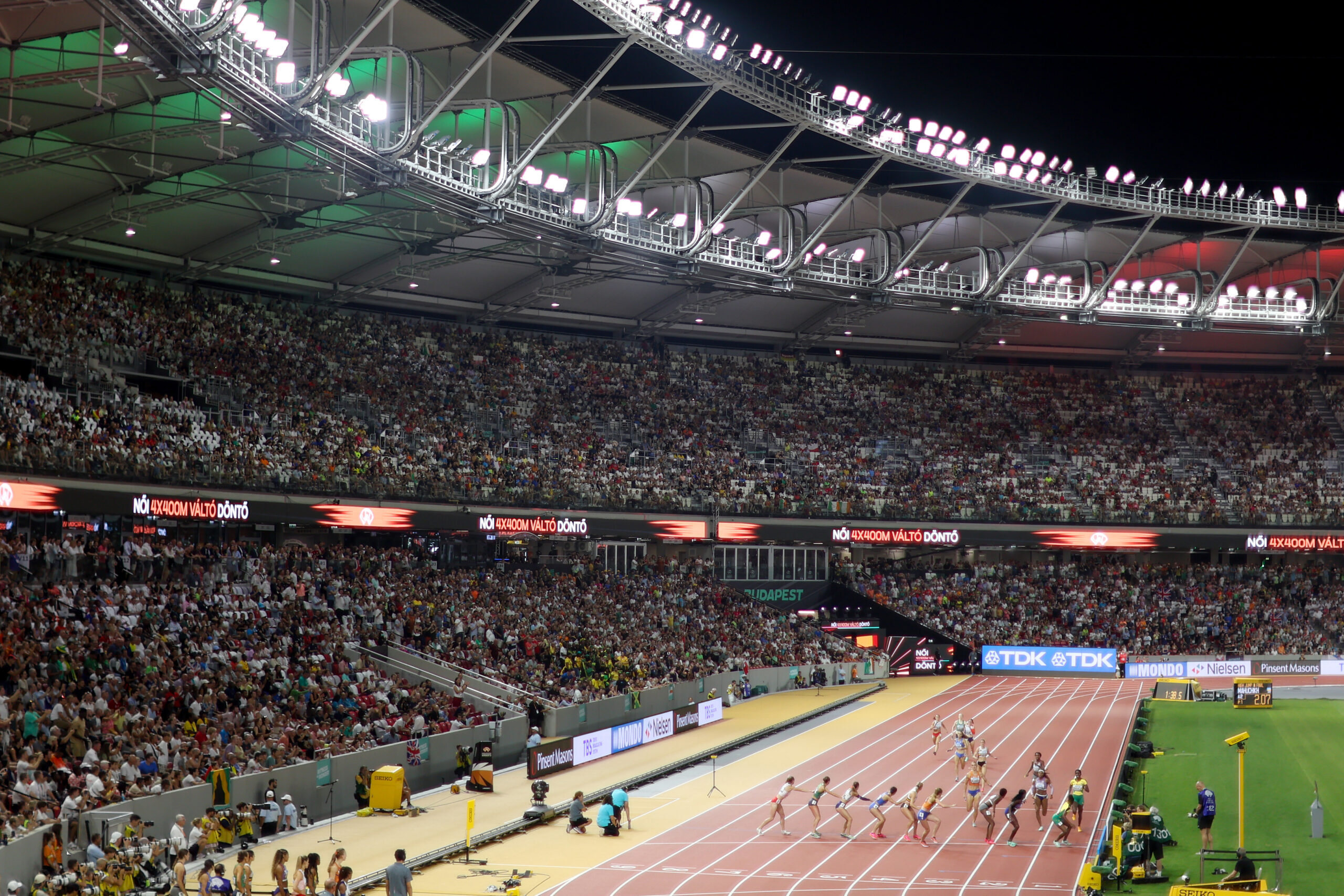
©Getty Images for World Athletics
Passionate Lover of ‘Stars’: Even During Overseas Expeditions…
–Please tell us about your personal side. How do you usually spend your days off?
It varies depending on the training season and the season, but I try to spend my time so that I don’t get tired as much as possible. On top of that, I used to be in the astronomy club in high school, and I have camping gear in my car, so if I really want to see the stars, I sometimes use it to go look at them at night.
–What made you fall in love with astronomical observation?
My father was a camping enthusiast, so I had many opportunities to look at the starry sky there, and I thought, “There are pictures in the sky. That’s the constellations,” and that’s how I got the feeling that those were the constellations. The first constellation I recognized was Orion. It looked like an hourglass…. After that, I looked at various constellations by myself, and before I knew it, I was hooked on the starry sky (laughs).
-When you have a little longer time off, do you go camping and look at the stars?
Yes, I do. Even if I don’t stay the night, I go to a place with few lights at night and look at them. During meteor shower season, I go to see them. Starlight is small, so if there is light, it quickly disappears. As much as possible, I go to places where there are few light sources. There are also meetings organized to watch meteor showers, so it is interesting to participate in them. A specialist will give you a lecture and tell you that a meteor shower is coming in that direction.
–Do you also take pictures?
No, I just watch. When it is cloudy, some people stream meteor showers live on YouTube, so I watch them. There is a large observatory on Mauna Kea in Hawaii, and I watch live streaming from there for meteor showers that cannot be seen in Japan. There are many constellations that can only be seen in the southern hemisphere, and when I went on an expedition to Australia, I would sneak out at night to watch them (laughs).

(Photo: 45-meter radio telescope at National Astronomical Observatory of Japan, Nobeyama in Nagano Prefecture)
Furniture Enthusiast: A Solo Visit to ‘Nitori’ Since Middle School Days?
–What are some of the things you are into these days, other than stars?
I love to spend time at home, so I am always thinking about how much I can make my home life better. I spend a lot of time thinking about how to pattern my room and desk area, and researching what kind of furniture I can find.
–Do you elaborate on the layout of your rooms?
It’s where I live, so I don’t want to compromise in any way. Once I start working on something, I am very particular about it. I am not satisfied until I am 100% satisfied, so it is difficult to see the end (laughs).

A chic room with a sense of unity with black and brown colors.
–Has that been since you were a child?
I have been going to “Nitori” by myself since I was in junior high school (laughs). I really like looking at furniture. I would take pictures of the furniture and make drawings of it on my own (laughs). I also love “IKEA.”
-I’m sure the house is very clean (laughs).
I would like to keep it clean. Basically, I have decided, “This is in this position,” so it might be a little difficult when people come over. Of course, I don’t say, “Put this back here,” you know? (laughs) It’s only in my own house, and I don’t mind it in other people’s houses. I think it is important how much I can make a castle in my territory that is easy to live in.
–I think there are a lot of shared rooms at national team training camps, etc.?
I set a boundary for myself to a certain extent and decide to “keep the room clean from here on out,” and if something gets in there, I secretly move it out (laughs).
Enduring for 8 Seconds Before Reacting: A Thoughtful Approach
–What do you feel people around you think of you?
I am not the type of person who usually makes a lot of noise, so I feel that people think of me as someone who doesn’t make a fuss. I try my best not to show the things I just talked about (laughs). I try to stay calm as much as possible, and even if I have a thought, I hold it in for 8 seconds. Then I don’t feel angry.
I also try not to force things. I just think this way, and the other person has their own way of thinking. I try to be aware only of myself.
–Who would you recommend, other than yourself, to compete in the 400m?
The 400m is a highly strategic event. I am good at the 200m and beyond, but if I were to say who is good at the first 200m, I would say Fuga Sato, Kaito Kawabata, and Julian Walsh are in that category. For the latter half of the 200m, I would say Yuki Joseph Nakajima. There are athletes with various tactical patterns, so if you are aware of them and have them as prior information, I think you will enjoy the 400m race.
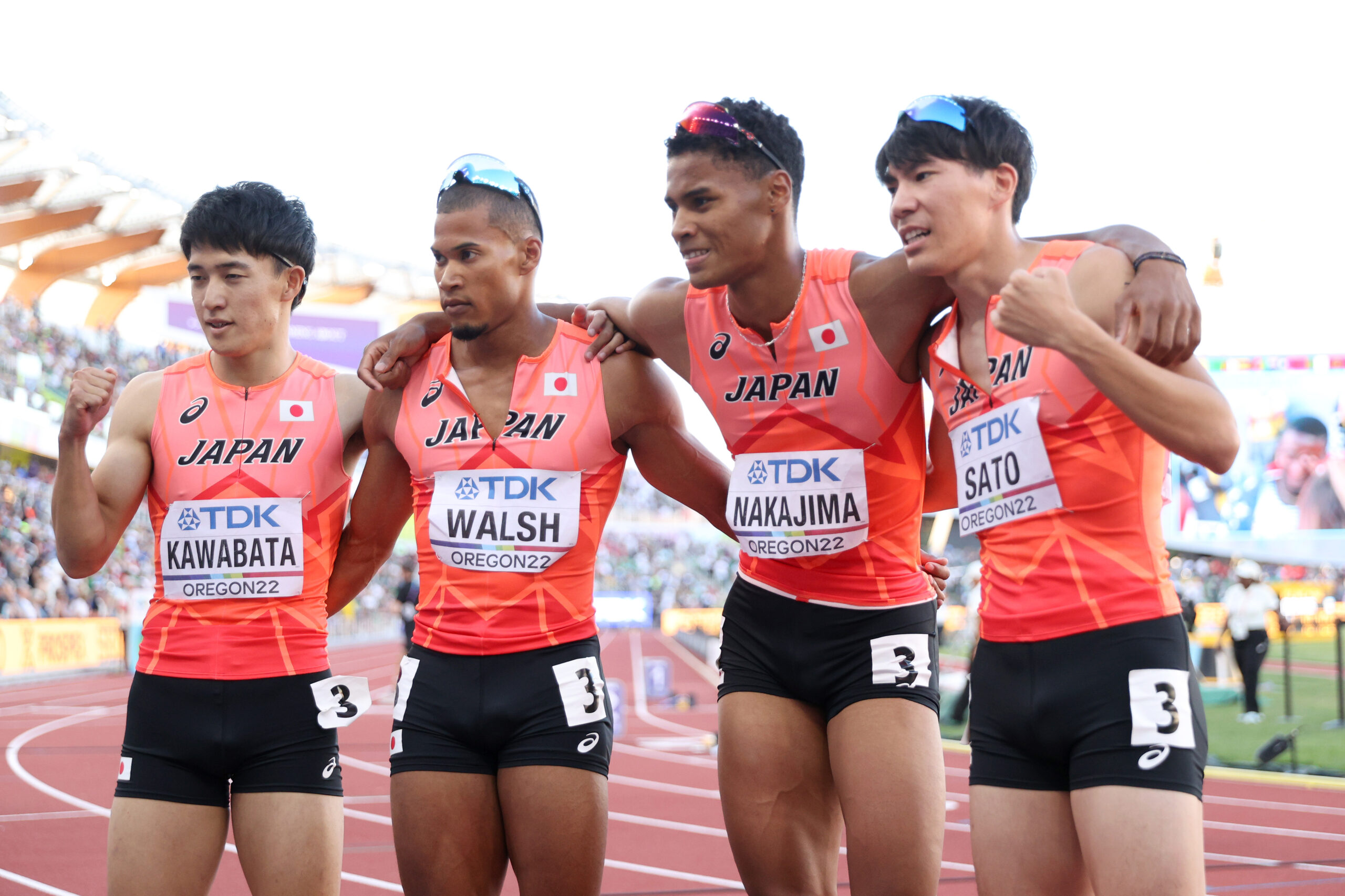
The fierce race against them in Japan is also a point of interest.
(From left to right: Kaito Kawabata, Julian Walsh, Yuki Joseph Nakajima, and Fuga Sato)
©Getty Images for World Athletics
–Finally, please give a message to our readers who are looking forward the World Athletics Championships Tokyo 25.
Thank you for your continued support and encouragement. It is thanks to you that we are able to compete, and I would like to convey that to you first.
I would like to think about how we can make the World Athletics Championships Tokyo 25 a success, and how we can make it an event that everyone will be happy to have hosted. We are prepared to spare no effort to achieve this, and I would like to work together with all of you to make the World Championships in Athletics in Tokyo a success!
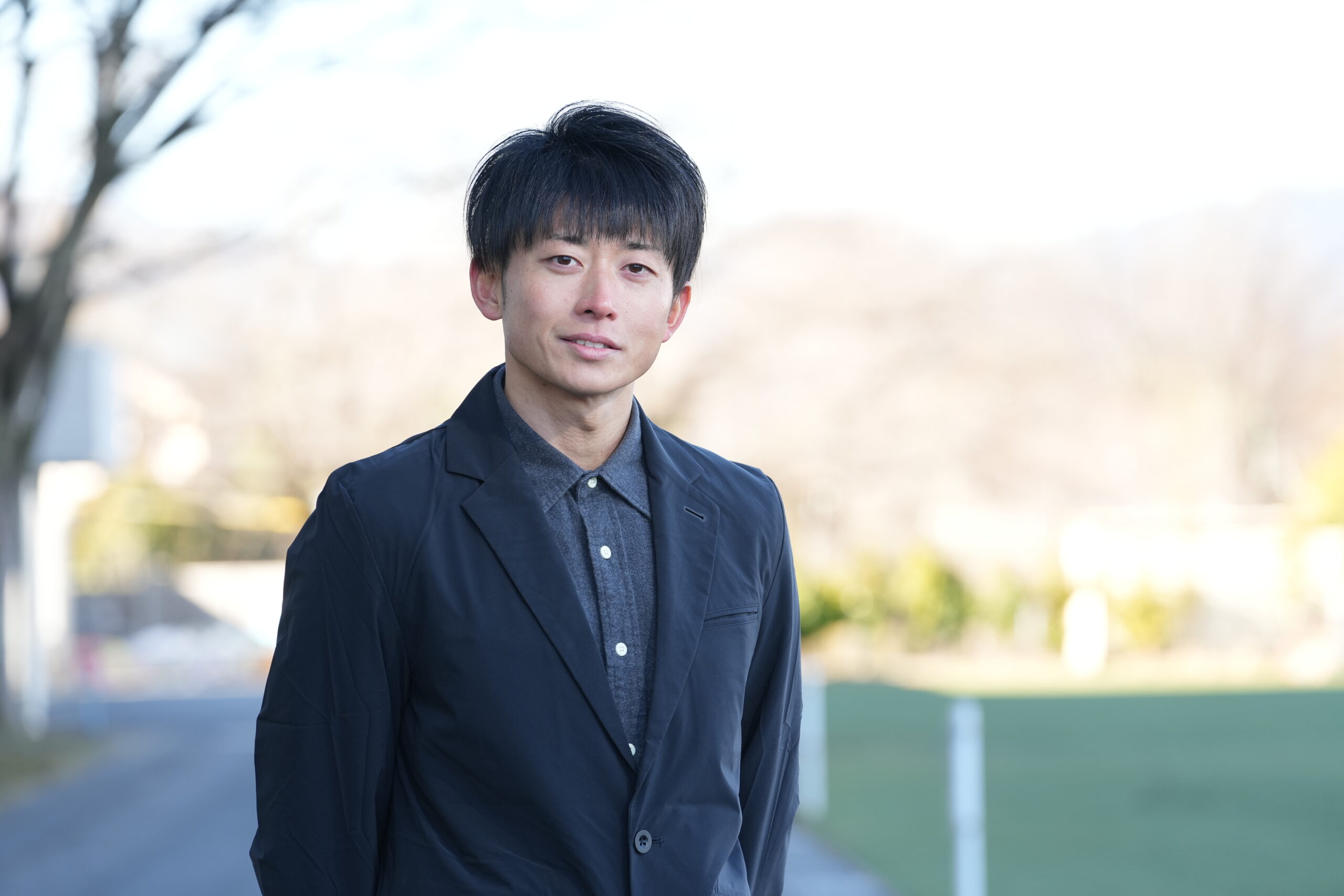
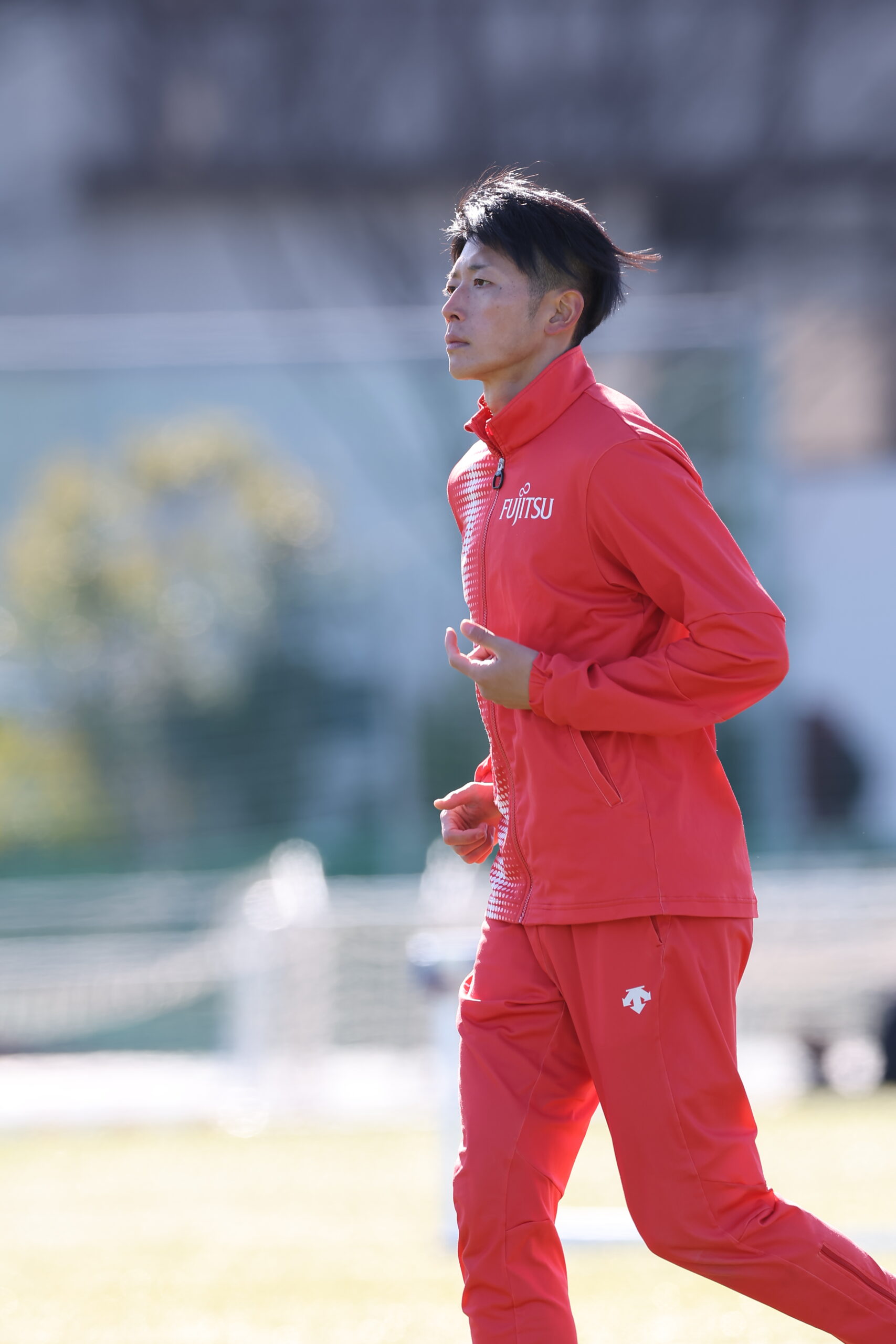
X:@cell_17(https://twitter.com/cell_17)
Instagram:tacomet_16(https://www.instagram.com/tacomet_16/)
text by Moritaka Ohashi
photographs by Kiyoshi Sakamoto
Co-produced with the Local Organising Committee of World Athletics Championships Tokyo 25.


